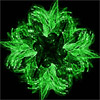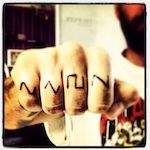| Author
|
Phazor on a bass?
|
jizy
IsraTrance Full Member

Started Topics :
90
Posts :
1493
Posted : Mar 17, 2009 16:21:25
|
|
is it possable to use a phazor as an alternative to eq? providing that the Lfo's are at 0 and feedback halfway, because searching thru the center freQencies and spread i seem to get good results. o and in mono not stereo
|

|
|
Suloo
IsraTrance Full Member

Started Topics :
87
Posts :
2822
Posted : Mar 17, 2009 16:42
|
Sure..if you get good results why not..its not usual to use a phazer, and i would actualy never recommend..besides from special fx or something but why not ..if it works..
        -------......-------...-..-..-..-.-.-.-.- -------......-------...-..-..-..-.-.-.-.- |

|
|
Speakafreaka
IsraTrance Junior Member

Started Topics :
18
Posts :
779
Posted : Mar 17, 2009 18:20
|
Certainly.
Rotating the phase of bass compared to uppers is a perfectly legitmate process, and often very useful.
Try the stardust plugin from arguru.        . .
http://www.soundcloud.com/speakafreaka |

|
|
jizy
IsraTrance Full Member

Started Topics :
90
Posts :
1493
Posted : Mar 17, 2009 18:28
|
|
cheers will do
|

|
|
jizy
IsraTrance Full Member

Started Topics :
90
Posts :
1493
Posted : Mar 17, 2009 18:36
|
|
superb quality for freeware, adds the extra touch to bass. all this fukin about with eq compression bla bla, today ive learned that the secret is in the envelope, velocity and your kick- star dust iz great
|

|
|
yveusss

Started Topics :
7
Posts :
125
Posted : Mar 17, 2009 22:50
|
|
What's "phase rotation" in Stardust ? I like what it does to the sound, but I don't understand what it is doing. |

|
|
Kane
IsraTrance Junior Member

Started Topics :
23
Posts :
1772
Posted : Mar 17, 2009 23:16
|
Not as a replacement for an eq, but if it sounds how you want it to, do it. I think in most cases I would still have an eq before or after the phaser.
        You believe in the users? You believe in the users?
Yeah, sure. If I don't have a user, then who wrote me? |

|
|
Speakafreaka
IsraTrance Junior Member

Started Topics :
18
Posts :
779
Posted : Mar 17, 2009 23:45
|
it moves the uppers in time in relation to the bass - like having a phase knob for both parts of the waveform.
The frequency components of the waveform remain the same ... but when they play does not.
And yes, this isn't a replacement for EQ at all, as your frequency componenets in a 'perfect' phase rotator remain untouched!
        . .
http://www.soundcloud.com/speakafreaka |

|
|
Tomos
IsraTrance Full Member

Started Topics :
84
Posts :
981
Posted : Mar 18, 2009 10:40
|
Quote:
|
On 2009-03-17 23:45, Speakafreaka wrote:
it moves the uppers in time in relation to the bass - like having a phase knob for both parts of the waveform.
The frequency components of the waveform remain the same ... but when they play does not.
And yes, this isn't a replacement for EQ at all, as your frequency componenets in a 'perfect' phase rotator remain untouched!
|
|
I think this is the only post I've ever read on this forum that flew right over my head.
Can you draw me a picture !! |

|
|
jizy
IsraTrance Full Member

Started Topics :
90
Posts :
1493
Posted : Mar 18, 2009 22:48
|
|
hehe
|

|
|
Speakafreaka
IsraTrance Junior Member

Started Topics :
18
Posts :
779
Posted : Mar 18, 2009 23:56
|
No, I can't!
Not in any useful or accurate way. 
How to explain...
Hopefully you are aware of what an FFT does. ie you can break any waveform down into a set of constituent sine, cosine and tan waves - and if you were to add them all up again, you'd be left with the original wavefom.
So imagine that you 'took apart' a saw wave using that process. You'd be left with a set of frequencies which you could (and indeed, you can) quite easily recreate using a load of sine wave generators at different freqs and volumes.
Now - if you were to play with the phase of each of these sine wave oscillators, would that change the amount of the freq you were putting into the actual output? No. Not in the least. It won't ever change how a freq sounds, because of course that doesn't make sense. A sine wave is a sine wave is a sine wave. The amount of each component doesn't vary... but when it plays does.
Now, if you use SE to build even a crude saw wave oscillator using harmonic tables and sine wave generators and play with the phase of each, you'll see you can get very different waveform shapes using this method, each of which will have the same frequency content as a saw wave, but, and most importantly are very different on the oscilloscope to a saw in how they interact with a very snappy envelope...
A phase rotator works on a similar principle, but instead of giving you a bank of sine wave generators, it is just an all pass filter. This just changes phase in one direction or the other around the cutoff of the filter - and the steepness of the filter determines how severely phase is changed as one approaches the cutoff.
Of course. In the example I gave, I used a cyclical waveform - if a complex waveform is used, skewing the bass in one direction and the tops in another direction certainly can and will result in freq difference on the output waveform from the process.
I hope that made some kind of sense. The bottom line is, that its perfectly possible to move bits of the waveform around within a cycle of the wave, for no change in freqs, but it will affect how the waveform sounds on attack, as which freqs play first is affected, how much click there is with the envelope, etc etc etc. That doesn't mean it is easy, and its certainly beyond my ability to draw!
        . .
http://www.soundcloud.com/speakafreaka |

|
|
bukboy
Hyperboreans

Started Topics :
40
Posts :
803
Posted : Mar 19, 2009 11:44
|
|
Thanks speakafreaka. That a really convenient utility for some extra control. |

|
|
Tomos
IsraTrance Full Member

Started Topics :
84
Posts :
981
Posted : Mar 19, 2009 12:27
|
I think I see. Let me just work through this.
I understand that any sound can be broken down and described by basic waves (thanks Joseph Fourier!).
Great example here of a saw wave made up of sine waves:
http://upload.wikimedia.org/wikipedia/commons/d/d4/Synthesis_sawtooth.gif
Phase describes the starting point any wave (ie the components of a more complex waveform, or the complex wave itself).
Changing the phase of any of the component waves that make up a more complex wave will have no effect on the total frequency content of the complex waveform. So it would look the same on an analyser like Span or Paz whatever you did to the phase.
This I kind of see as obvious - except, doesn't changing the phase of simple waves that make up a complex sound cause different interactions when recombined - ie a different set of destructive cancellations or additions when combined back to the complex waveform - therefore changing the frequency content?
So, playing with the phases of component waves (either from a table, or oscillator) to generate a more complex wave (such as a saw) will create a different overall shape - but with the same frequency content.
I don't know many synths that allow control of individual basic wave phases that make up the sound - I know my Virus allows you to choose the rangle of the starting phase or have it the same every time.Trilogy bass VST is a a rompler so every sound starts on the same phase (and you can control the starting point with a knob too)
Anyway, you're saying the frequency content is the same (despite my question above) whatever the component phases are doing - but the overall shape of the complex form (ie saw wave) will change that thus it will interact differently with filter envelopes - making it sound faster or slower (I assume either more plucky or rounder sounding)
When you say 'move bits of the waveform around', an example would be the angle of a saw wave, like how the saw 'leans'?
So after all this - the point of the stardust plugin allows you to 'tilt' parts of a waveform to allow it to interact with envelopes and filters differently.
How is that useful after it's left the synth though?
|

|
|
Nectarios
Martian Arts

Started Topics :
187
Posts :
5292
Posted : Mar 19, 2009 12:35
|
|
Speakafreaka
IsraTrance Junior Member

Started Topics :
18
Posts :
779
Posted : Mar 19, 2009 13:25
|
changing the phase of the individual waveforms changes the amplitude of the waveform, but *not* the freqs 
the waves are mathematically equivalent . 
here is where I hope you are on PC.
I knocked up a rough demo of what I'm talking about, making a quasi saw out of 8 sine waves, and then giving each a phase control, and a whacking great oscilloscope.
http://www.yousendit.com/download/UmNLU2VpeFVveE94dnc9PQ
this is going to give you a clearer description of the phenomena I'm talking about then any of my descriptions 
its useful after its left the synth, precisely because you can't always get exactly the attack you want... sometimes it doesn't seem punchy enough, or the bass seems to come in a bit too slowly... somehow, you can get things more in line, in a way which isn't always possible within the synth itself. And sometimes it sounds shit or at other times great. Just like any effect - you've gotta know when to use it.
pipe&slippers, what we are talking about is time correlation of upper parts of waveform to lower part of waveform, as affected by a phaser. I'm trying to explain the principle using the idea of phase knobs on a synth. This is probably ill advised  I'm not very good at explaining things I'm not very good at explaining things 
        . .
http://www.soundcloud.com/speakafreaka |

|
|